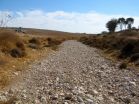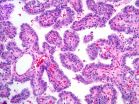That once far–fetched idea seems within closer reach as a result of two new studies describing the advances, published today in Cell, accomplished through extensive cross–team collaboration between two teams at the Wyss Institute headed by Wyss Core Faculty Members James Collins, Ph.D., and Peng Yin, Ph.D..
"In the last fifteen years, there have been exciting advances in synthetic biology," said Collins, who is also Professor of Biomedical Engineering and Medicine at Boston University, and Co–Director and Co–Founder of the Center of Synthetic Biology. "But until now, researchers have been limited in their progress due to the complexity of biological systems and the challenges faced when trying to re–purpose them. Synthetic biology has been confined to the laboratory, operating within living cells or in liquid–solution test tubes."
The conventional process can be thought of through an analogy to computer programming. Synthetic gene networks are built to carry out functions, similar to software applications, within a living cell or in a liquid solution, which is considered the "operating system".
"What we have been able to do is to create an in vitro, sterile, abiotic operating system upon which we can rationally design synthetic, biological mechanisms to carry out specific functions," said Collins, senior author of the first study, "Paper–Based Synthetic Gene Networks".
Leveraging an innovation for chemistry–based paper diagnostics previously devised by Wyss Institute Core Faculty Member George Whitesides, Ph.D. , the new in vitro operating system is ordinary paper.
"We've harnessed the genetic machinery of cells and embedded them in the fiber matrix of paper, which can then be freeze dried for storage and transport — we can now take synthetic biology out of the lab and use it anywhere to better understand our health and the environment," said lead author and Wyss Staff Scientist Keith Pardee, Ph.D.
Biological Programs on Paper
Using standard equipment at his lab bench and commercially–available, cell–free systems, Pardee designed and built a wide range of paper–based diagnostics and biosensors. He also used commonly–used fluorescent and color–changing proteins to provide visible indication that the mechanisms were working. Once built, the paper–based tools can be freeze dried for safe room–temperature storage and shipping, maintaining their effectiveness for up to one year. To be activated, the freeze–dried paper need simply be rehydrated with water.
The paper–based platform can also be used in the lab to save a huge amount of time and cost as compared to conventional in vivo methods of validating tools for cell–based research. "Where it would normally take two or three days to validate a tool inside of a living cell, this can be done using a synthetic biology paper–based platform in as little as 90 minutes," Pardee said.
As proof of concept, Collins and Pardee demonstrated a variety of effective paper–based tools ranging from small molecule and RNA actuation of genetic switches, to rapid design and construction of complex gene circuits, to programmable paper–based diagnostics that can detect antibiotic resistant bacteria and even strain–specific Ebola virus.
The Ebola sensor was created by using the paper–based method and utilized a novel gene regulator called a "toehold switch", a new system for gene expression control with unparalleled programmability and flexibility reported in the second study in Cell. Although its inventors had designed the toehold switch to regulate genes inside living cells, its function was easily transferred to the convenience of ordinary freeze–dried paper, showcasing the true robustness of both the freeze–dried paper technique and the toehold switch.
The Ebola sensor was conceived by Wyss Institute Postdoctoral Fellow Alex Green, Ph.D., co–inventor of the toehold switch regulator and lead author of its report, after the ongoing West Africa crisis brought the deadly pathogen to global spotlight. Due to its easy assembly and fast prototyping ability, Green was eager to test the paper–based platform as an operating system for the toehold switch, which he had initially developed for programming gene expression in living cells. Green reached out to Pardee and together they assembled the prototype Ebola sensor in less than a day and then developed an assay that can differentiate between Sudan and Zaire virus strains within an hour of exposure.
Putting the 'Synthetic' in 'Synthetic Biology'
The toehold switch works as such an accurate biosensor because it can be programmed to only react with specific, intended targets, producing true "switch" behavior with an unprecedented ability to turn on targeted gene expression. It can be programmed to precisely detect an RNA signature of virtually any kind and then turn on production of a specific protein.
Reported in the paper "Toehold Switches: De–Novo–Designed Regulators of Gene Expression", Green developed the toehold switch gene regulator with senior author Yin, who is Associate Professor in the Department of Systems Biology at Harvard Medical School in addition to being a Wyss Core Faculty Member.
"While conventional synthetic biology complicates accuracy and functionality because it relies on re–purposing and re–wiring existing biological parts, the toehold switch is inspired by Nature but is an entirely novel, de–novo–designed gene expression regulator," said Yin.
"We looked at our progress to rationally design dynamic DNA nanodevices in test tubes and applied that same fundamental principle to solve problems in synthetic biology," said Yin. The resulting toehold switch, an RNA–based organic nanodevice, is a truly "synthetic" synthetic gene regulator with 40–fold better ability to control gene expression than conventional regulators.
The toehold switch functions so precisely that many different toehold switches can operate simultaneously in the same cell. This allows several toehold switches to be linked together, creating a complex circuit, which could be programmed to carry out multiple–step functions such as first detecting a pathogen and then delivering an appropriate therapy.
"Instead of re–purposing an existing part that was evolved by Nature, we wanted to change our way of thinking, leverage naturally–occurring principles, and build from scratch," Green said. His Ph.D. in materials science and strong computer programming skills allowed him to approach biology with a fresh perspective and start from the ground up to engineer the toehold switch, rather than merely rewiring existing natural parts.
By combining forces, the two Wyss Institute teams showed that the toehold switch, so effective in living cells for its dynamic control of in vivo gene expression, is also fully capable of functioning in vitro on freeze–dried paper. With its impressive gene regulation functions able to be transported out of the lab for easy delivery of diagnostics and gene therapies, paper–based toehold switches promise a profound impact on human and environmental health.
"Whether used in vivo or in vitro, the ability to rationally design gene regulators opens many doors for increasingly complex synthetic biological circuits," Green said.
The Wyss Effect
Standing on their own, both paper–based synthetic gene networks and toehold switch gene regulators could each have revolutionary impacts on synthetic biology: the former brings synthetic biology out of the traditional confinement of a living cell, the latter provides a rational design framework to enable de–novo design of both the parts and the network of gene regulation. But combining the two technologies together could truly set the stage for powerful, multiplex biological circuits and sensors that can be quickly and inexpensively assembled for transport and use anywhere in the world.
"The level of idea sharing and collaboration that occurred to achieve these results is evidence of the teamwork that is the lifeblood of the Wyss," said Institute Founding Director Don Ingber, M.D., Ph.D., Professor of Vascular Biology at Harvard Medical School and Boston Children's Hospital, and Professor of Bioengineering at Harvard School of Engineering and Applied Science. "But we go beyond collaboration, to ensure that these great ideas are translated into useful technologies that can have transformative impact in the real world."
INFORMATION:
Images and video are available.
The Wyss Institute for Biologically Inspired Engineering at Harvard University uses Nature's design principles to develop bioinspired materials and devices that will transform medicine and create a more sustainable world. Working as an alliance among all of Harvard's Schools, and in partnership with Beth Israel Deaconess Medical Center, Brigham and Women's Hospital, Boston Children's Hospital, Dana Farber Cancer Institute, Massachusetts General Hospital, the University of Massachusetts Medical School, Spaulding Rehabilitation Hospital, Boston University, Tufts University, and Charité - Universitätsmedizin Berlin, and the University of Zurich, the Institute crosses disciplinary and institutional barriers to engage in high-risk research that leads to transformative technological breakthroughs. By emulating Nature's principles for self-organizing and self-regulating, Wyss researchers are developing innovative new engineering solutions for healthcare, energy, architecture, robotics, and manufacturing. These technologies are translated into commercial products and therapies through collaborations with clinical investigators, corporate alliances, and new start-ups.




